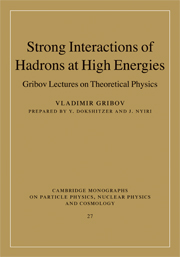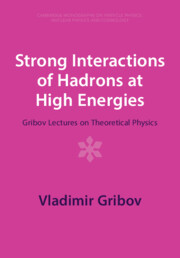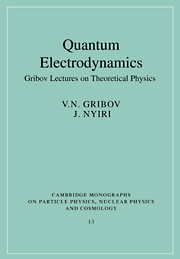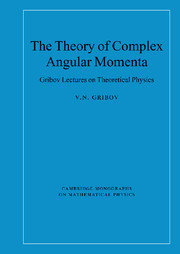Strong Interactions of Hadrons at High Energies
Vladimir Gribov was one of the founding fathers of high-energy elementary particle physics. This book derives from a lecture course he delivered to graduate students in the 1970s. It thus provides today's graduate students and researchers with the opportunity to learn from the teaching of one of the twentieth century's greatest physicists. Its content is still deeply relevant to modern research, for example exploring properties of the relativistic theory of hadron interactions in a domain of peripheral collisions and large distances that quantum chromodynamics has barely approached. It covers a combination of topics not treated elsewhere, whilst remaining self-contained and thus accessible at graduate level. In guiding the reader, step-by-step, from the basics of quantum mechanics and relativistic kinematics to the most challenging problems of high-energy hadron interactions with simplifying models and physical analogies, it demonstrates general methods of addressing difficult problems in theoretical physics.
- Guides the reader step-by-step from basic quantum mechanics and relativistic kinematics to the most challenging problems of high-energy hadron interactions
- Provides an opportunity to learn directly from lectures given by one of the twentieth century's greatest physicists
- Demonstrates general methods of addressing difficult problems in theoretical physics
Product details
November 2008Hardback
9780521856096
488 pages
253 × 178 × 28 mm
0.98kg
Temporarily unavailable - available from TBC
Table of Contents
- 1. Introduction
- 2. Analyticity and unitarity
- 3. Resonances
- 4. Electromagnetic interaction of hadrons
- 5. Strong interactions at high energies
- 6. t channel unitarity and growing interaction radius
- 7. Theory of complex angular momenta
- 8. Reggeon exchange
- 9. Regge poles in perturbation theory
- 10. Regge pole beyond perturbation theory
- 11. Reggeon branchings
- 12. Branchings in the s channel and shadowing
- 13. Interacting reggeons
- 14. Reggeon field theory
- 15. Particle density fluctuations and RFT
- 16. Strong interactions and field theory
- References
- Index.







